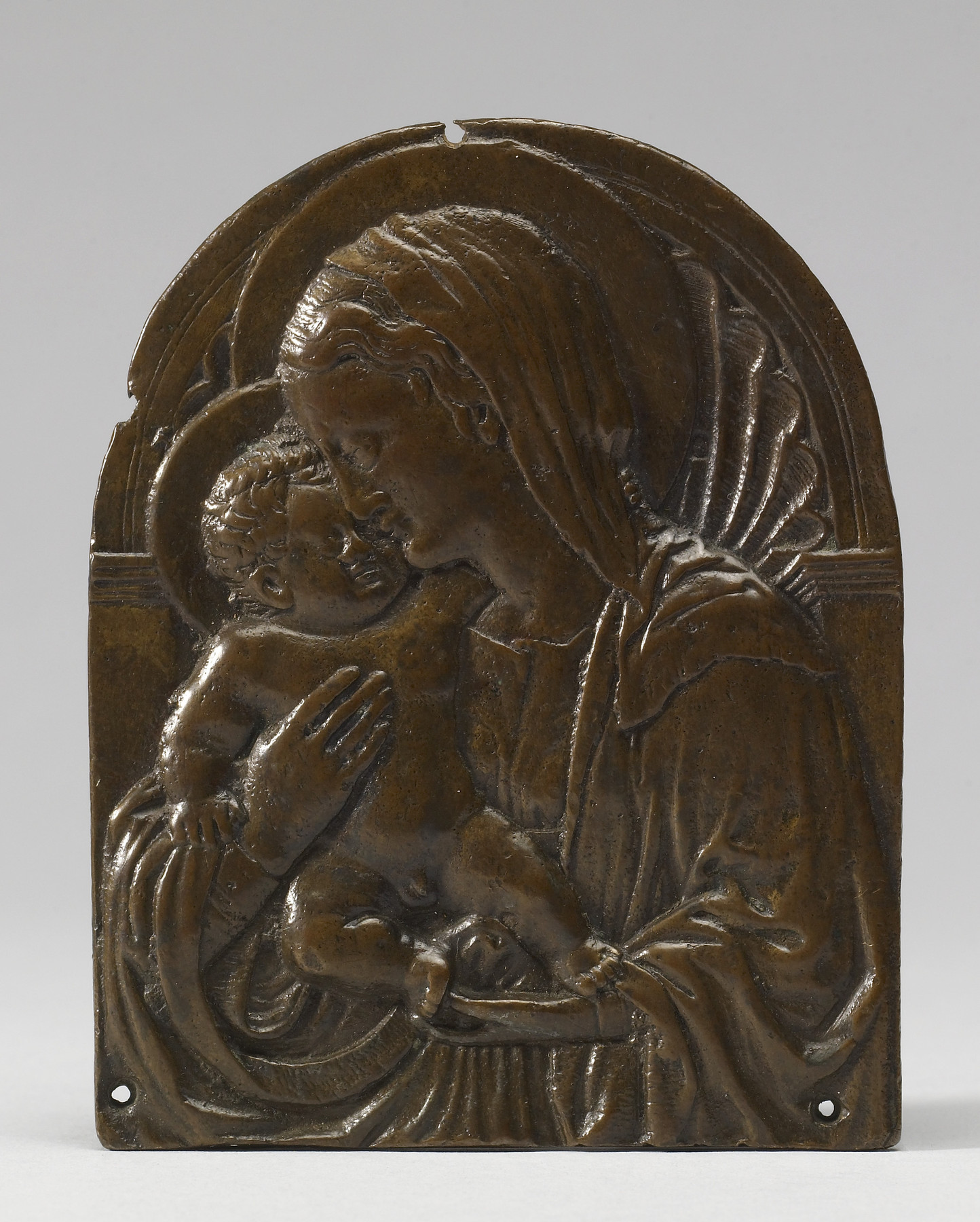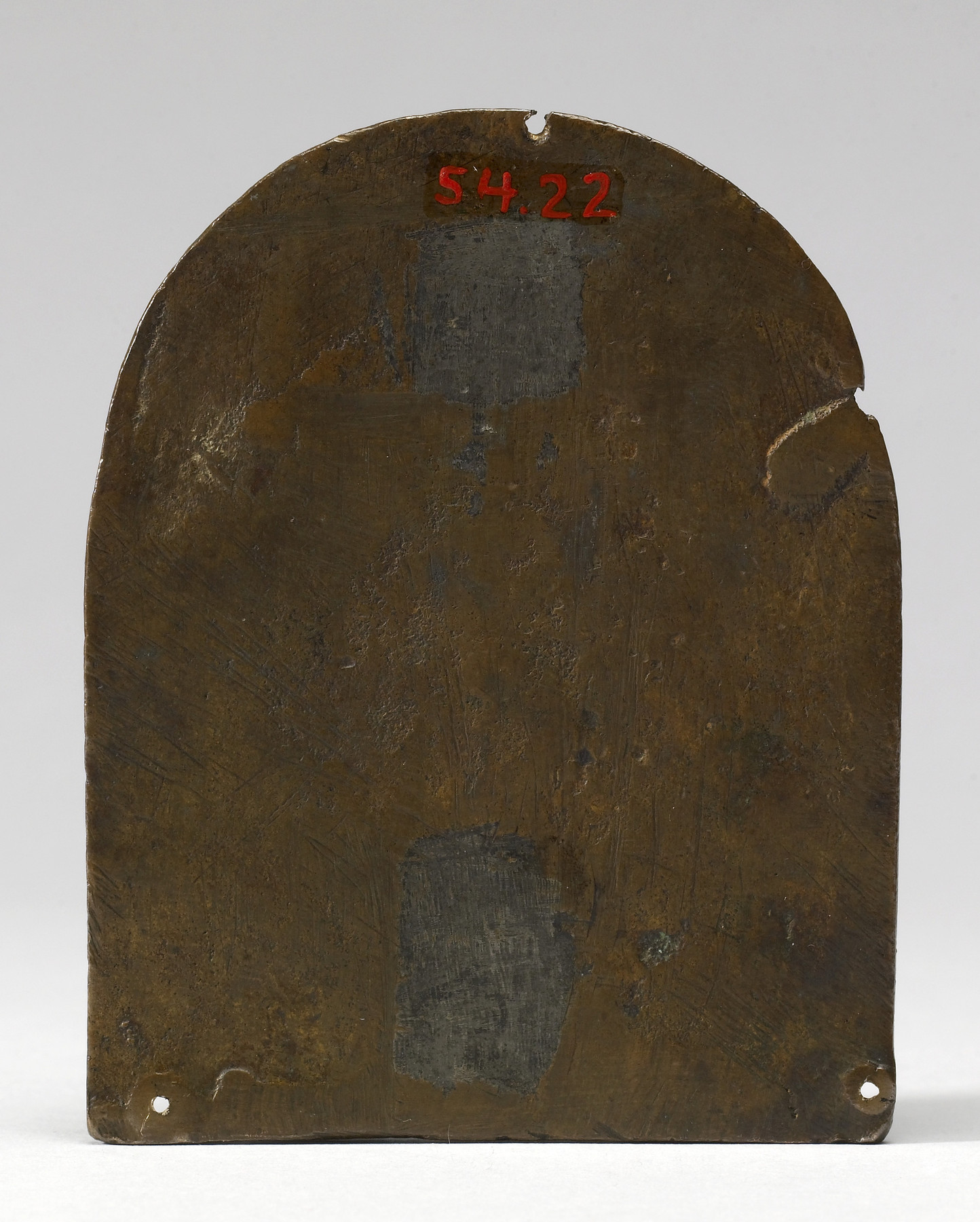Virgin and Child in a Niche
(Renaissance Europe )
This small plaque depicts a half-length image of the Virgin holding a squirming Christ Child close to her. The Virgin's face, seen in profile, is visually linked to the frontally faced Christ, who reaches his arm around her neck and presses his face against hers. Behind the figures, a scalloped-shell lunette forms an arch that frames the figures.
The plaque's small size (easily fitting into the hand or attached inobstrusively next to a door) and maternal image suggests it was a private and portable devotional object for the home. There are many versions and variations of this composition. scholars have thought that all are based on a lost original. The Walters example, though worn, is extremely fine with soft volumes defining the drapery and flesh that distinguish it from harder, more linear interpretations.
Provenance
Provenance (from the French provenir, 'to come from/forth') is the chronology of the ownership, custody, or location of a historical object. Learn more about provenance at the Walters.
Acquired by Henry Walters, Baltimore, 1924; by bequest to Walters Art Museum, 1931.
Exhibitions
| 1980 | Beyond Nobility: Art for the Private Citizen in the Early Renaissance. Allentown Museum of Art, Allentown. |
Conservation
| Date | Description | Narrative |
|---|---|---|
| 11/26/1958 | Treatment | cleaned; coated |
| 8/28/1979 | Loan Consideration | examined for loan |
Geographies
Italy, Padua (Place of Origin)
Measurements
H: 3 3/4 x W: 2 15/16 in. (9.5 x 7.5 cm)
Credit Line
Acquired by Henry Walters, 1924
Location in Museum
Not on view
Accession Number
In libraries, galleries, museums, and archives, an accession number is a unique identifier assigned to each object in the collection.
In libraries, galleries, museums, and archives, an accession number is a unique identifier assigned to each object in the collection.
54.22






